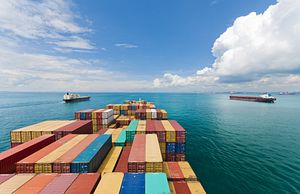One of the key arguments used by the Obama administration to support the Trans-Pacific Partnership (TPP) is that if the United States doesn’t write the rules on trade, China will. There’s some truth here: China is, in fact, leading an effort to negotiate a massive trade agreement across the Asia-Pacific – one that excludes the United States and that will have markedly different rules and standards than those written in the TPP.
But should America be worried?
Let’s start with a bit of background. The Chinese-led agreement, known as the Regional Comprehensive Economic Partnership (RCEP), includes ASEAN plus six other regional states: China, Japan, Korea, Australia, New Zealand, and India. Together they account for nearly 27 percent of global GDP. Negotiations launched in 2013 and the latest round was held last month in Brunei*.
Similar to the TPP, RCEP will cover goods and services trade, investment and dispute settlement. However, the agreement will be less comprehensive. RCEP is unlikely to include any provisions on issues such as labor, food safety, and the environment, or on sensitive political areas like government procurement.
But while the TPP and RCEP are different, they are hardly incompatible. Rather than competing with one another, the two agreements would ideally complement each other. Rather than fearing China’s efforts to complete RCEP, the U.S. should encourage them.
To understand why, consider first one of the more frustrating problems in international economic policy. The problem is called the “noodle bowl” effect, and it arises when more and more states create overlapping bilateral trade deals with complex and often conflicting rules. This problem is acute in the Asia-Pacific, where free trade agreements have proliferated in recent years – in 2015 there were 126 FTAs in force in Asia alone, according to the World Trade Organization.
RCEP would help solve this problem by consolidating trade standards throughout Asia. Specifically, the deal would unify the five free trade agreements that already exist between ASEAN and its six partners. While it’s possible that RCEP and TPP could create standards that are difficult to reconcile, it’s not inevitable; such hurdles could be avoided given open discussion and clear-eyed thinking from trade negotiators.
Indeed, rather than being stumbling blocks, RCEP and the TPP could form the essential pillars of a broader agreement for the entire Asia-Pacific region. Chinese Premier Li Keqiang said last year that “TPP and RCEP can…contribute to the joint goal of establishing an Asia-Pacific free trade zone.” Similarly, U.S. Trade Representative Michael Froman has noted the TPP could serve as a “building block” for a Free Trade Agreement of the Asia Pacific.
Such an agreement would have significantly larger benefits than either the TPP or RCEP individually. According to estimates by economists Peter Petri, Michael Plummer, and Fan Zhai, potential gains from a comprehensive Asia-Pacific agreement could approach $2 trillion, or nearly 2 percent of world GDP in 2025. Compare this with the expected TPP gains of 0.9 percent in terms of global GDP, or the 0.4 percent gains associated with RCEP.
Unfortunately, while the potential for gains is clear, the path forward is not. There are currently a number of hurdles standing in the way of both RCEP and TPP’s conclusion. For RCEP, the deal still needs to be negotiated, and substantive issues over tariff reductions, as well as spillover effects from geopolitics (such as tension over territorial disputes in the South and East China Seas) could realistically derail efforts. For the TPP, the primary obstacle is the U.S. Congress, but Canadian reservations are also a source of uncertainty.
The best path forward for the U.S. involves at least three steps. First and foremost, the U.S. has to intensify efforts to pass the TPP, meaning increased outreach from the White House to (primarily) Republicans, who are more likely to form the coalition that will support the deal. Second, the U.S. should practice more restraint in framing the TPP as a counterweight to the Chinese-led RCEP. This may not be politically expedient, but it will serve U.S. interests in the long run. Finally, the U.S. should pressure its TPP partners which are also negotiating the RCEP (there are seven: Australia, New Zealand, Japan, Vietnam, Malaysia, Myanmar, Brunei) to press for standards and regulations in the RCEP that can be consolidated with the TPP.
Andy Morimoto is a research associate at the Chicago Council on Global Affairs, where he focuses on the global economy. He is also a junior non-resident fellow at the Center for the National Interest.
*Corrected. The negotiations were held in Brunei, not Cambodia.

































